Do Enviroguard service commercial and residential customers?
Enviroguard, provide pest control and bird control services to both commercial and residential clients, as well as installing pest management systems for all types of commercial customer types through the Northwest. We deal with all enquiries with the same level of urgency, however big or small to ensure that all customers recieve the highest level of service.
Do Enviroguard provide free surveys?
A free survey is given to both commercial and domestic customers. Larger scale commercial sites will be surveyed and priced after the initial inspection , the survey will be backed up with a written report detailing the level of infestation, the appropriate treatments and most cost effective method of dealing with the problem. However in depth your survey might be, this process is completely free.
How much does bird control cost?
This depends on the scale of the problem and the nature of the infestation. Enviroguard offer a free survey with a no obligation quotation, so you know exactly what you are paying before work commences.
Our clients find our services very cost effective especially when offset against the cost of possible damage to buildings, reputation and in terms of health and safety. Working locally is also cost effective, not only reducing costs but also your business and personal carbon footprint.
What are the implications of a bird problem?
Heavy infestations on buildings can create large amounts of fouling and make buildings look unsightly, the fouling is also very acidic and causes damage to the fabric of buildings, which in turn leads to higher cleaning and repair bills.
Bird fouling has the potential to make walkways slippery, causing a health and safety hazard.
Nests can block gutters and downpipes, and potentially damage plant on rooftops, such as air conditioning units.
Feral Bird fouling is also extremely hazardous material. Micro-organisms within the fouling are carriers of many pathogenic diseases, some are detailed below.
Extrinsic Allergic Alveolitis: More commonly known as pigeon fanciers lung, this is a serious allergic state that cannot be remedied, while any associated bird matter (fouling, feathers, or nesting materials ) is present.
Salmonellosis: This bacteria is passed on to humans via the birds’ droppings, contaminated feathers and nesting materials. It is estimated that over 68% of the feral pigeon population carries Paratyphoid strains of the Salmonella bacteria.
Histoplasmosis: The yeast fungus ( Histoplasma capsulatum ) which causes this infection grows in the surface soil in many parts of the world. The spores thrive in bird fouling. Humans contract the disease by breathing in the spores. Symtoms are loss of appetite, diarrhoea and liver enlargement. Diagnosis is by blood test or by growing the fungus from sputum specimens.
Crytococcosis: A very serious illness which begins as a lung infection and can progress to attack the meninges and manifest itself as meningitis.
Erysipelas: Since the introduction of penicillin, it has become very rare. It is a very serious type of wound infection. It is however still possible for anybody in close proximity to birds to be attacked by virulent strains of streptococcus pyogenes which enter through minor open wounds.
Campylobacter: This illness manifests itself as a severe case of food poisoning Campylobacter enteritis. Contamination from the campylobacter jejuni is also known to be transmitted by Corvids such as magpies pecking at milk bottle tops and contaminating the milk.
Chlamydiosis: Relates to two similar diseases which are both influenza type viruses: (1) Ornithosis, the vector is a bacterium, Chlamydia psittaci, (2) Psittacosis, the closer of the two to a typical pneumonia. The young and the elderly are particularly at risk.
What birds are protected against bird control?
All birds, their nests and eggs are protected by law, it is an offence, with certain exceptions to intentionally kill, injure or take any wild bird, or damage the nest. Enviroguard treat the exceptions that are Crows, Collard Dove, Canada Geese, Greater Black- backed Gulls, Herring Gulls, Jackdaws, Jays, Magpies, Feral Pigeons, Rooks, and Wood Pigeons.
How do you treat buildings that are affected by birds?
Enviroguards bird proofing team are specialists in all aspects of bird control, and understand what is required to exclude birds permanently from infested buildings.
Enviroguard offer a complete bird-proofing service, with a range of techniques to exclude birds from internal and external areas of buildings. Ledges and sills, for example, can be protected with spikes and wires which prevent birds landing without harming them. Larger areas, and complex roofs, can be proofed with suspended netting systems to completely exclude birds.Prior to installation buildings can also be washed down and disinfected to remove fouling and the associated health hazards.
How do you access area where birds are active?
Areas of buildings that are vulnerable to nesting and roosting birds are often difficult to reach. Enviroguard Technicians are trained and certificated in the use of mobile access platform, which can reach inaccessible areas avoiding the use of scaffolding.
Why do birds behave in the way they do?
Nesting gulls in particular can become very territorial and highly aggressive to people in the vicinity of their nesting areas.
Flocking together is a natural feature of bird behaviour. Nesting birds will return year after year to the same site for breeding and so will their young.
Birds such as pigeons and gulls have become a major pest in urban areas.
What does the Law say?
In the UK the principal piece of legislation protecting birds is the Wildlife & Countryside Act 1981 and its subsequent amendments. The governing body is the Department of the Environment Food & Rural Affairs, DEFRA.
In the act it states, “all wild birds, their nest and their eggs are protected by law. However there are three general licences that may allow an authorised person to carry out activities in relation to certain species of wild birds”
kill or take wild birds for conservation purposes (GL40)
kill or take wild birds for public health or safety (GL41)
kill or take wild birds to prevent serious damage (GL42)
In relation to pest control the most common general licence that applies is GL41. This licence permits Authorised Persons to carry out a range of otherwise prohibited activities against the species of wild birds listed on the licence. This licence may only be relied upon where the activities are carried out for the purpose of preserving public health or public safety, and users must comply with licence terms and conditions. These Conditions include the requirement that the user must be satisfied that legal and in particular non-lethal methods of resolving the problem are ineffective or impracticable. The authorised person should document this.
Subject to all the terms and conditions of this licence and solely for the purpose stated above, this licence permits Authorised Persons, based on the species listed below,: i. to kill or take the wild bird ii. to take, damage or destroy their nests or iii, to take or destroy their eggs:
- Jackdaw (Corvus monedula)
- Pigeon, Feral (Columba livia)
- Goose, Canada (Branta Canadensis)
- Parakeet, Monk (Myiopsitta monachus)
For more information on general licences follow this link to GOV’s website
If your circumstances are not covered by these general licences you must apply for an individual licence. You can apply to control wild birds, including the lesser black-backed gull and herring gull to prevent disease or agricultural damage, conserve plants and animals or protect public health and safety. (A08 &A09).
For more information on individual licences follow this link

